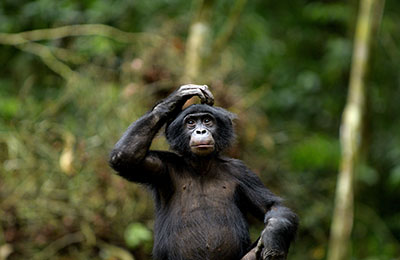HEAS members So Jung Han and Martin Kuhlwilm publish study of the evolutionary history of bonobos
More On Article
- "Archäologie am Berg". Public Weekend of Archaeology in Hallstatt in September.
- 2023 CALL FOR NOMINATIONS - The Rohlf Medal
- 20th anniversary of the Laboratory for scanning electron microscopy at the Vienna Institute for Archaeological Science (VIAS), University Vienna, 14.11.2024, 15:00
- 3D visualization of bioerosion in archaeological bone
- A comparative archaeometric study of Late Bronze Age Black Lustrous and Red Lustrous Wheel-made wares from the Eastern Mediterranean

In a new study in Current Biology, HEAS members So Jung Han and Martin Kuhlwilm together with an international team, improve our understanding of bonobos. Bonobos are, together with chimpanzees, our closest living relatives, but the genetic structure of their population was so far not well understood. They show that three genetically distinct bonobo groups of inferred Central, Western and Far-Western geographic origin exist within the bonobo range. Their split times are up to ~145,000 years ago, which similar to that of some chimpanzee subspecies. This highlights the need of attention to bonobo substructure, which is fundamental both to understand their evolutionary past and preserve their future.